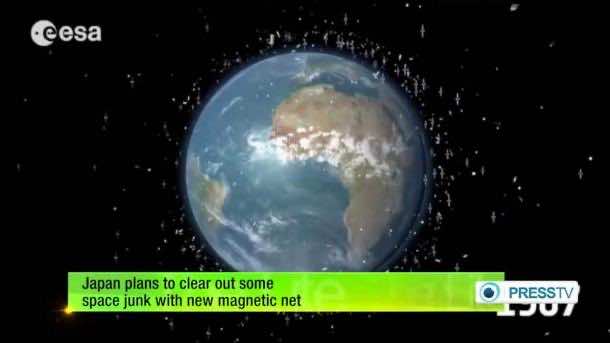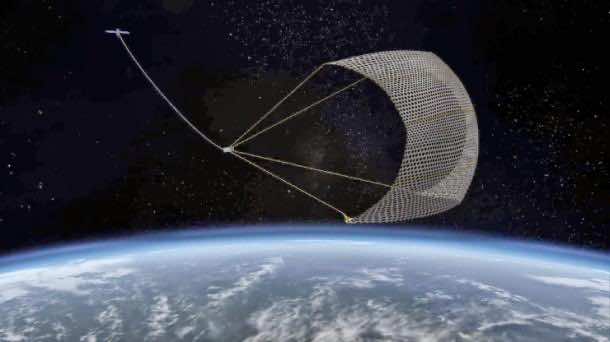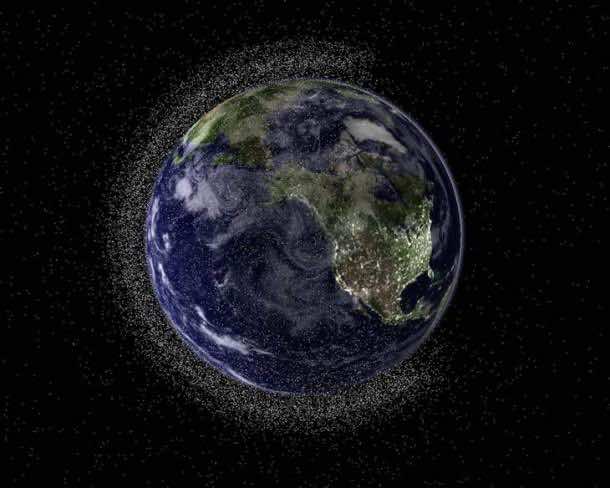We are a strange specie, we tend to destroy nature first and then work really hard to mend the damage which we have caused in the first place. Well, we can’t really blame ourselves for it. Our thinking and perspective broadens with time and we tend to realize our mistakes later on but its better late than never, right?
 Speaking of how we pollute our environment; we have also taken this disease up to space as well. According to researchers, there are about 22,000 bits and pieces which are classified as space junk and pose a threat to space vehicles. This space junk includes a lot of stuff ranging from bulky rocket stages which are discarded, and the stuff that comes from collision of space vehicles. This space junk weighs around 5,500 tons and well that gives you a perspective on the gravity of the situation, doesn’t it?
Speaking of how we pollute our environment; we have also taken this disease up to space as well. According to researchers, there are about 22,000 bits and pieces which are classified as space junk and pose a threat to space vehicles. This space junk includes a lot of stuff ranging from bulky rocket stages which are discarded, and the stuff that comes from collision of space vehicles. This space junk weighs around 5,500 tons and well that gives you a perspective on the gravity of the situation, doesn’t it?
In order to avoid any disastrous event, a number of space agencies continuously track paths of large pieces of the junk out there and ensure that the spaceships and or satellites don’t come in contact with the floating junk. This is achieved by using only those orbits that are “clean”. However, as anyone can point out, this approach is temporary and now we are at a point where the space has become saturated with junk and something needs to be done about it. And its very important because we need to protect space vehicles from the space junk lurking out there.
 Japan has taken an initiative to come up with a permanent solution to this problem. JAXA is a space agency which has decided to do something about this space junk problem and is going to begin mission cleanup soon enough. The idea is to launch a street sweeper version for the space which will allow JAXA to collect the junk from space. The initial tests will make use of a net with a length of 1,000 ft. The net will come with a magnetic charge which will be able to attract the junk which floats around the space. The net has been manufactured by a Japanese Fishing Net Manufacturer. However, this time the catch made by the net will be spectacular.
Japan has taken an initiative to come up with a permanent solution to this problem. JAXA is a space agency which has decided to do something about this space junk problem and is going to begin mission cleanup soon enough. The idea is to launch a street sweeper version for the space which will allow JAXA to collect the junk from space. The initial tests will make use of a net with a length of 1,000 ft. The net will come with a magnetic charge which will be able to attract the junk which floats around the space. The net has been manufactured by a Japanese Fishing Net Manufacturer. However, this time the catch made by the net will be spectacular.
 Once the net is filled with junk, the ship will return to earth where it will burn up completely during re-entry. If the initial tests are a success, the next step will include a net with the length of 2/3rd of a mile and further steps will include even bigger nets which will be able to catch complete rocket stages and huge chunks. The initial tests are expected to take place in February this year. That surely is a great initiative by Japan and we wish them good luck!
Once the net is filled with junk, the ship will return to earth where it will burn up completely during re-entry. If the initial tests are a success, the next step will include a net with the length of 2/3rd of a mile and further steps will include even bigger nets which will be able to catch complete rocket stages and huge chunks. The initial tests are expected to take place in February this year. That surely is a great initiative by Japan and we wish them good luck!
Check out the video below for more on this:


